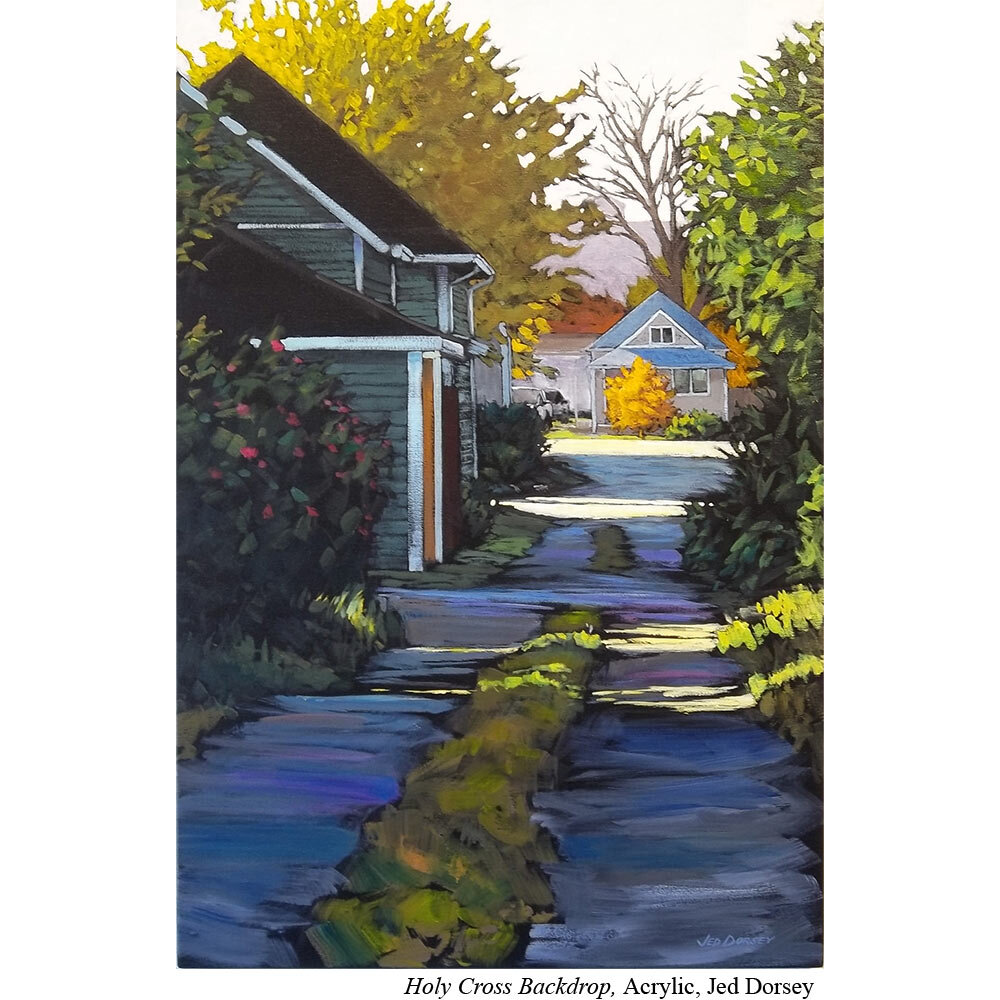It Takes More Than Just Skills, It Takes Community...and Other Takeaways from Jed Dorsey
Jed Dorsey (Ep. 27) is an acrylic painter who grew up with watercolorists. This connected deeply with me as it reflects my own experience. I grew up with a mother and grandmother who both painted in watercolors, but I paint in acrylics.
Listening to him talk about his medium of choice made me incredibly excited to get back into my own paints. I hope it will for you too (no matter what medium you paint in).
Here are three of my takeaways from the conversation.
MORE THAN PRETTY
Jed Dorsey grew up with watercolorists. He began his artistic study in watercolor. He loves to look at watercolor paintings. And yet, he paints in acrylic.
Why?
Watercolor isn’t right for his temperament. Dorsey knew he needed something where he could move fast and layer without long drying times. Watercolor wasn’t the right medium for him. Acrylics absolutely was.
I had never really considered this.
We may begin painting in a medium because we love the art other artists create in it. But each medium has different characteristics. And just because you love the work others do in it, it still may not be the right one for you and your art.
SIMPLIFICATION BRINGS FREEDOM
It can be easy to think that having a hundred tubes of paint means you have access to 100 colors.
But you only have access to them if you understand how to use them.
Painting involves a lot of juggling. Materials and concepts and processes. And for this reason, there is a freedom that comes with limits.
Limiting your palette allows you to gain instincts about how to mix this color or that color. You get freedom of color.
Limiting your process, allows you to truly develop a piece of the painting (like the drawing or the design) before moving onto the next stage. You get freedom of confidence.
Simplification also brings easy wins.
Want almost guaranteed harmony in your painting? Work with three colors plus white and black. Want better design? Figure it out before you begin laying down paint.
Simplification brings stronger work and less anxiety getting to it. How liberating is that.
IT TAKES MORE THAN JUST SKILLS, IT TAKES COMMUNITY
Dorsey runs an online art workshop called Acrylic University. He said that he notices that the people that improve most are the people who engage in the community part of painting.
Learning to paint can be an isolating pursuit. You can get trapped in your own head and in your own experience. It can be easy to think that no one else struggles with this thing you’re struggling with.
Community brings in some light. Community tells you that you are not alone. That in fact EVERYONE struggles with this piece of it. Community reminds you that you are on the right path and that if you just keep showing up day after day, you’ll start to see progress.
Plus, artists are just fun, curious and creative people.
So while, yes, you and only you can do the work that it takes to learn to paint. But those efforts are made easier when surrounded by a good community to encourage you and for you to encourage in turn.
WHAT ARE YOUR TAKEAWAYS?
I’d love to hear your takeaways from the conversation in the comments section below.



